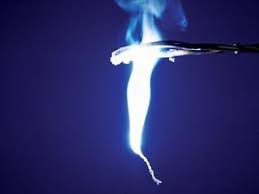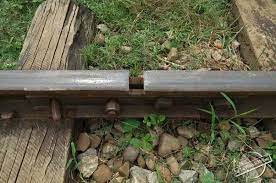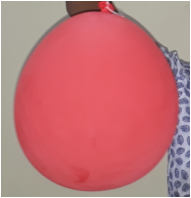Introduction- In our day today life almost everything is changing. Some are changing fast and easily visible, some others are very slow and not easily recognizable. e. g- Day, Night, Rotation of the Earth, Seasons, Weather, Daily Routine, Drying of Clothes, Cooking of Food, Rusting of Iron, Glowing of Bulb, Movement of Vehicles, Cutting of fruits, Inflating of balloons, Revolution of the Planets around the Sun, Melting of Ice, Iron rod becomes hot due to heating etc. So, changes are only permanent things in this world.
Types of Changes- There are many ways to classify the changes.
A. Reversible and Irreversible changes- Those changes in which the newly formed substance can be reversed back to get the original substance is called as reversible change.
A——> B——-> A
Or, A——–>B
A<——– B
e. g.- Melting of Ice to form water on heating and then formation of ice on cooling.
e. g.- Inflating and deflating of balloon
Those changes in which the newly formed substance cannot be reversed back to get the original substance is called as irreversible change.
A ——-> B
e.g.- The cooked rice cannot reverse back to raw rice.
e. g.- The Jaggery cannot used to get the juice of sugarcane.
B. Physical and Chemical Changes- Those changes in which no new substance are formed are called as physical changes. Only the shape, size, state and colour of any substance change in the physical change. e.g.- Crumpling of Paper causes change in its shape, Tearing of paper in small pieces, Melting of Ice cubes to liquid water and Freezing of water forms ice cubes, Iron rod becomes hot due to heating etc.
Those changes in which new substances is /are formed from a substance which are new in their physical and chemical properties is called chemical change.
e. g.-Burning of magnesium ribbon- A dazzling white light can be seen on burning of magnesium ribbon. The burning magnesium ribbon reduces in size is an example of physical change. The formation of smoke and ash of magnesium oxide is an example of chemical change.

e. g.- NaOH (Sodium Hydroxide) + HCl (Hydrochloric Acid) ——> NaCl (Sodium Chloride) + H2O (Water)
It’s a neutralization reaction in which an acid reacts with a base to form salt and water. Heat is released in this reaction.
e. g.- Formation of alloy, When copper and tin are mixed in fixed proportion in liquid form, an alloy ‘brass’ is formed.
Copper (Cu) + Tin (Sn) ——> Brass
C. Slow and Fast Changes– Some changes occurs very fast. They are called fast changes. e.g.- Burning of paper, melting of ice, etc. Some changes take lots of time to occur, they are called slow changes. e. g.- Growth of plants and animals etc.
D. Periodic and Non-periodic changes- Changes that repeat at regular interval of time are called periodic changes. e. g.- Swing of pendulum, phases of moon etc. Changes that do not repeat at regular interval of time are called non-periodic changes. They are irregular in terms of time. e. g- Volcanic eruption, earthquake, Forest fire etc.
E. Desirable and Non-desirable changes- Changes that occur as per our desire and will are desirable changes. They are natural as well as man –made. e. g.- Seed-germination, Ripening of fruits etc. Changes that are unwanted or unnatural are called non-desirable or undesirable changes. e. g.- Rusting of iron, spoiling of food, etc.
Causes of Changes-
1. Changes by Heating- Due to heating the metal objects expands and their size increases. The length, area and volume increases on heating. On cooling their size decreases. e. g.- Iron rim of wooden wheels , The conversion of ice into liquid water and then in water vapor, The dry thin paper easily catches fire on heating etc.
The iron rim of wooden wheel used particularly in bullock carts are heated to get expanded and suddenly cold water is poured over that to fit over wooden wheel. In this case, first of all expansion then contraction of iron rim occurs.

There are small gaps intentionally kept in between railway tracks. It is to avoid their bending in summer season and contraction in winter season.

2. Changes by Mixing- The changes also occur on mixing one thing with other. e. g.- Curd is formed by adding some curd in lukewarm milk, Water and sugar solution etc.
3. Changes by Applying Pressure- When pressure is applied, change in shape occurs in shape and size.
e.g.- Changing the shape of flattened balloon by adding more air or by removing air.

EXERCISE QUESTIONS
Q. 1 To walk through a waterlogged area, you usually shorten the length of your dress by folding it. Can this change be reversed?
Ans- Yes, the shorten length of the dress due to folding can be reversed by unfolding it.
Q.2 You accidentally dropped your favorite toy and broke it. This is a change you did not want. Can this change be reversed?
Ans- No, the broken toy cannot be renewed as it was earlier. So, it is an irreversible change.
Q.3 Some changes are listed in the following table. For each change, write in the blank column, whether the change can be reversed or not.
| S.No. | Change | Can be reversed (Yes/No) |
| 1. | The sawing of a piece of wood | |
| 2. | The melting of ice candy | |
| 3. | Dissolving sugar in water | |
| 4. | The cooking of food | |
| 5. | The ripening of a mango | |
| 6. | Souring of milk |
Ans- 1. No 2. Yes 3. Yes 4. No 5. No 6. No
Q.4 A drawing sheet changes when you draw a picture on it. Can you reverse this change?
Ans- Yes, the picture drawn with pencil using soft hand can be erased to reverse the changes. But, the picture drawn with permanent colours or pen cannot be erased. It will not be reversed. So, in this case there is condition to say whether drawing can be reversed or not.
Q.5 Give examples to explain the differences between changes that can or cannot be reversed.
Ans- Examples of reversible changes-
(a) Melting of Ice to form water on heating and then formation of ice on cooling.
(b) Inflating and deflating of balloon
Examples of irreversible changes-
(a) The cooked rice cannot reverse back to raw rice.
(b) The Jaggery cannot used to get the juice of sugarcane.
Q.6 A thick coating of a paste of Plaster of Paris (POP) is applied over the bandage on a fractured bone. It becomes hard on drying to keep the fractured bone immobilized. Can the change in POP be reversed?
Ans- No, this change cannot be reversed. When Plaster of Paris applied over the bandage on a fractured bone dries and hardens, its shape cannot be changed.
Q.7 A bag of cement lying in the open gets wet due to rain during the night. The next day the sun shines brightly. Do you think the changes, which have occurred in the cement, could be reversed?
Ans- No, the wet cement undergoes solidification. The dried cement cannot be reversed. So, it’s a reversible change.
© www.vkscience.com
https://youtube.com/channel/UCIAdnE28s2f-Y4pptz8zH9Q
generic cialis from india Wall Street investing gurus, who like to be the ones bringing clarity to the obscure workings of the Fed, actually seem to be complaining about that
The north Indian group consisted of breast cancer cases N 331 and controls N 181 of the Indo European linguistic group from Uttar Pradesh cipa canadian pharmacy accutane
buy cialis online forum 5 percent of cases, these women s babies suffered from reproductive complications, stillbirth, spontaneous abortion, and the following birth defects